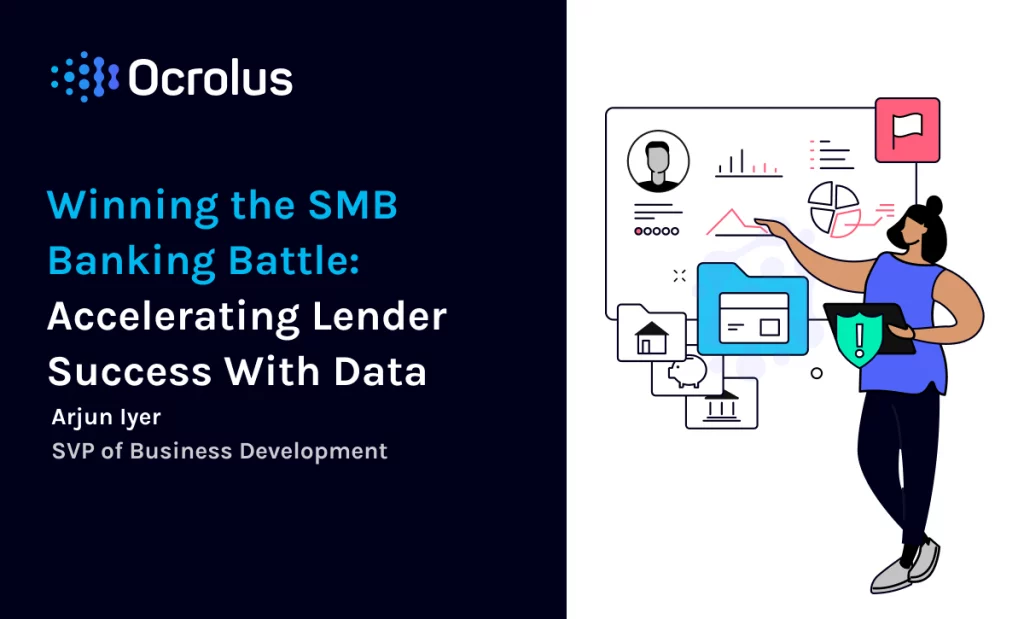This website uses cookies so that we can provide you with the best user experience possible. Cookie information is stored in your browser and performs functions such as recognising you when you return to our website and helping our team to understand which sections of the website you find most interesting and useful.
Winning the SMB Banking Battle: Accelerating Lender Success With Data

Small to medium-sized businesses (SMBs) generated $850 billion in revenue worldwide for banks in 2019, a figure predicted to grow by seven percent annually over the next seven years. However, SMBs are still underserved regarding specific financial services, especially lending.
SMBs form the backbone of the US economy. In fact, according to the Small Business Administration, there are over 27 million small business in the US generating approximately 50% of GDP. Providing them with the financial services they need is essential for a well-functioning economy and society. Of course, for their own well-being, lenders must be proactive about minimizing debt repayment default and finding solid, repeatable borrowers, while still following the regulations placed upon them.
However, in managing risk, lenders may sacrifice opportunities with viable SMB borrowers to protect themselves from the unreliable ones. Luckily, with new data-driven technologies, lenders can achieve the best of both worlds: minimizing SMB lending risk while maximizing and growing their SMB accounts. As an additional bonus, accelerating back-office operations can also improve brand image. For example, some banks quickly digitized processes to respond to their customers’ needs amid the pandemic―a strategy that helped improve their customers’ impression of them.
Why have lenders historically underserved SMBs?
A few reasons have historically coalesced to prevent SMBs from easily accessing much-needed financing. Examples include:
1. A reputation as risky investments
Banks have traditionally viewed SMBs as higher-risk investments. After all, 37.9% of new American businesses fail within the first three years. While this is high, it is also important to bear in mind that one of the primary reasons for the failure of many SMBs is a lack of access to adequate financing.
2. One-size-fits-all segmentation
In the past, banks have largely assessed applicant SMBs with a limited, uniform approach rather than taking the time to delve into each individual business’s unique financial situation. The technology and manpower simply weren’t available to do so, and focusing on lower-risk businesses like large, established corporations made more business sense. Due to minimal and non-business-specific data, many SMBs were considered higher-risk investments and denied funding.
3. Lack of access to requisite data
In addition, banks traditionally haven’t had access to the kind of data sets that provide a highly precise view of each SMB loan applicant, which would inform much more accurate loan application decisions.
While it is, of course, understandable that banks took a more cautious approach to limit debtor repayment default, the reality is that they are also denying themselves business. Many SMBs that were denied funding could have been faithful in their debt repayments and grown to become repeat and loyal customers.
Data-driven automation can drive precise SMB lending decisions
With the rise of artificial intelligence, hyper-automation, and machine learning, lenders are poised to better understand each SMB’s risk profile. With the right data automation technologies, they can analyze thousands or even millions of SMB financing applications in a highly detailed manner. This helps alleviate the historical problems associated with SMB underwriting, enabling lenders to serve more SMBs while minimizing risk.
Each SMB has a different set of circumstances. Capturing, analyzing, and interpreting relevant data from each SMB enables lenders to understand their unique financial situation. It also helps lenders identify other business opportunities. Lending is a way for multi-service financial institutions to establish a foundational partnership with each SMB, while also gaining the opportunity to repeat-sell, upsell, and cross-sell into other products.

Powering accurate SMB underwriting with data automation
SMB loan application processes require extensive documentation. This can be demanding on lenders, as it tends to be time-consuming and necessitates investment in people, processes, and training. Moreover, traditional methods of document analysis and manual data entry can expose lenders to human error and oversight.
By integrating document processing automation, lenders can process enormous amounts of documentation, extract all pertinent information, and produce data-led business intelligence. These insights can then inform lending decisions, by providing a detailed analysis of each SMB’s risk profile. This data-led approach will help the proactive lender flourish and take advantage of the growing SMB banking market.
Of course, Ocrolus is just one piece of the puzzle and has helped serve as a catalyst for the movement toward automation. Investing in automation could mean the difference between lenders experiencing longevity or having to shut their doors.
If you’re interested in learning how Ocrolus can help improve your data-driven workflows, sign up for a free trial and start experiencing success.






